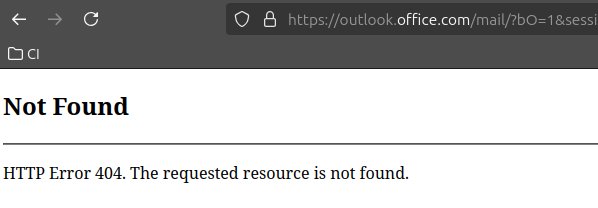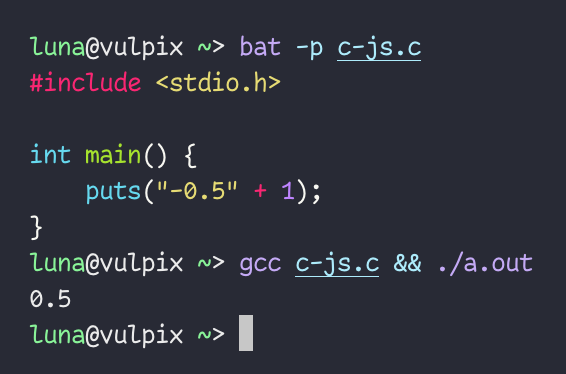Posts
2461Following
661Followers
1486Linux Kernel Security
linkersec@infosec.exchangeDefects-in-Depth: Analyzing the Integration of Effective Defenses against One-Day Exploits in Android Kernels
An outstanding paper by Lukas Maar et al. about analyzing the exploitation techniques used in public 1-day Android kernel exploits over the last few years and cross-referencing them with the mitigations implemented by various Android vendors 🔥
https://www.usenix.org/system/files/usenixsecurity24-maar-defects.pdf
 radare
radare 
radareorg@infosec.exchange
🎮 The @travisgoodspeed training on recovering Gameboy ROMs from microscopic pictures with the help of #radare2 is now indexed, with the rest of #r2con2024 presentations in the Radare TV website 👉 https://www.radare.org/tv/
buherator
buheratorNow instead of the absolutely braindead topics that come up based on geoloation (is the average Hungarian Internet user really this shallow??) I get awesome jumprope vids and tips!
Thx #adtech!
I don't know if this is known but last week I found out that giving a user the #Windows OOBE experience can be abused for privilege escalation.
Scenario: A company gives a new employee his computer and lets him do the first login. During the #Windows OOBE, he presses SHIFT+F10 and opens CMD.
Since this CMD runs as SYSTEM, he installs a custom CA certificate via certutil, places 'WptsExtensions.dll' into System32, and creates a new local backdoor admin user.
Once the #Microsoft OOBE and/or #Intune setup is complete, only the local backdoor admin user will be deleted. The certificate and DLL still remain. A reboot is enough to trigger the DLL being loaded as SYSTEM.
The third-party cert could be detected using sigcheck, but that's a little hacky...
Does anyone know a fix for this? I've not found anything inside #Intune that would kill this vector.
buherator
buherator#RSS #POSSE #Syndication
Foone🏳️⚧️
foone@digipres.clubBad idea: build a captcha library that embeds DOSBox so it can make you beat levels/puzzles from DOS games to continue.
Prove you're a human! Beat Lifewater Oasis from Commander Keen 4! Defeat the Yeti in Kings Quest 5! Make sure 15 lemmings survive! Get the sword in Prince of Persia!
badkeys
badkeys@infosec.exchangeI discovered a certificate using a "public private key", in this case a key that is part of OpenSSL's test suite. This would not necessarily be a particularly interesting event. It happens every now and then that people use private keys they find on the Internet, likely due to a lack of understanding of public key cryptography. I usually report them for revocation, and move on. However, this one is a bit more unusual. It has been issued by the CA Digicert - for a domain owned by Digicert. https://groups.google.com/a/mozilla.org/g/dev-security-policy/c/d21mtDJ7YXQ
Federico Dotta
apps3c@infosec.exchangeEighth article of the series "Extending Burp Suite for fun and profit - The Montoya way" is out!
Topic: BChecks - A quick way to extend Burp Suite Active and Passive Scanner!
https://security.humanativaspa.it/extending-burp-suite-for-fun-and-profit-the-montoya-way-part-8/
buherator
buheratorhttps://blog.adafruit.com/2024/11/25/a-dual-game-boy-chiptune-keytar-musicmonday-2/
"Your scientists were so preoccupied with whether they could, they didn't stop to think if they should."
gergelykalman
gergelykalman@infosec.exchangeSince it's almost been a year and OBTSv7 is around the corner, I published the long overdue writeup for badmalloc:
https://gergelykalman.com/badmalloc-CVE-2023-32428-a-macos-lpe.html
buherator
buheratorhttps://tierzerosecurity.co.nz/2024/11/26/data-protection-windows-api-revisited.html
REverse_Tactics
reverse_tactics@bird.makeupSlides & video from our @grehackconf talk "Attacking Hypervisors - A Practical Case" are online! Learn how we exploited vulnerabilities to escape VirtualBox during Pwn2Own Vancouver 2024: https://www.reversetactics.com/publications/2024_conf_grehack_virtualbox/
Thalium Team
thalium_team@bird.makeupReversing virtualized binaries is no easy task. Our intern Jack took on exploring automated devirtualization techniques, and presents in our latest blog post an efficient, modular, taint-based approach that leverages LLVM IR: https://blog.thalium.re/posts/llvm-powered-devirtualization/
j_angliss
j_angliss@fosstodon.orgChanneling @Viss
"Go to the cloud, it'll be great"
Microsoft has been reporting an issue since 8:54pm yesterday. The basic summary of the issue is "Teams,. Exchange, Purview, SharePoint, and Universal Print are all broken". So you know - everything you need to use in Office365 to operate on a day to day basis in a Microsoft world.
Copilot is also broken apparently, but we don't like that anyway, right?!
luna, only carbon now
luna@pony.socialA lot of people don’t know this one weird trick — much like JavaScript, C also lets you perform arithmetic with mixed types:
buherator
buheratorhttps://blog.scrt.ch/2024/11/25/arbitrary-web-root-file-read-in-sitecore-before-v10-4-0-rev-010422/
buherator
buheratorhttps://blog.talosintelligence.com/finding-vulnerabilities-in-clipsp-the-driver-at-the-core-of-windows-client-license-platform/
hanno
hanno@mastodon.socialDear everyone who owns domains that are *not used for e-mail*, particularly ones that are potential targets for phishing (banks, high-profile names): Could you please configure SPF+DMARC, ideally with p=reject? You may wonder: Why should I configure anything email for a host that isn't used for email? Well... it helps others to identify spam sent with your domain as the sender.
abadidea
0xabad1dea@infosec.exchangeGood news: The Dell firmware update utility definitely checks whether update executables are signed.
Bad news: Dell is posting unsigned update executables to their website labeled “critical” which then fail to install due to the good news
buherator
buheratorhttps://pentesterlab.com/blog/jwt-algorithm-confusion-code-review-lessons



